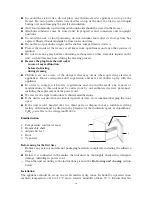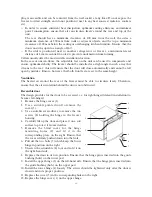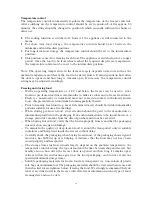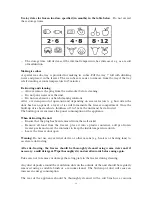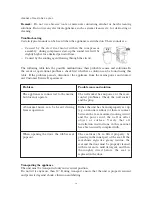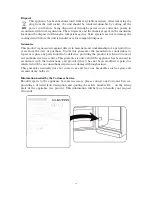
Temperature control
The temperature control automatically regulates the temperature of the freezer’s interior.
After switching on, the temperature control should be set to position
5
. After approx. 20
minutes, the setting should be changed to position
3
, which is usually sufficient for home or
office use.
0
The cooling function is switched off; however, the appliance is still connected to the
mains.
1
For short-term food storage, the temperature control should be set between the
minimum and intermediate positions.
3
For long-term food storage, the temperature control should be set to the intermediate
position.
5
This position is used for freezing fresh food. The appliance is switched on for a longer
period. Once the food to be frozen has reached the required deep-freeze temperature,
the temperature control can be re-set to the intermediate position.
Note: The operating temperature in the freezer largely depends on factors such as the
ambient temperature and that of the food to be newly frozen. It also depends on how often
the door is opened and how long it remains open. If necessary, the temperature control
setting may be adjusted accordingly.
Freezing and storing food
- With an operating temperature of –18°C and below, the freezer can be used to store
frozen or pre-frozen food for several months, to make ice cubes and to freeze fresh food.
- Fresh (i.e. non-frozen) or warm food must not come into contact with already frozen
food; this prevents frozen food from becoming partially thawed.
- Prior to freezing, fresh food (e.g. meat, fish, minced meat) should be divided into smaller
portions suitable for use after thawing).
- When storing pre-frozen food, strict attention should be paid to the manufacturer’s
information provided on the packaging. If no such information is to be found, however, a
storage period of 3 months from the date of purchase must not be exceeded.
- When buying frozen food, verify that the food is properly frozen, and that the packaging
does not show any sign of damage.
- To maintain the quality of deep-frozen food, it should be transported only in suitable
containers and then placed inside the freezer without delay.
- Carefully check the packaging when buying frozen food: if the packaging shows signs of
moisture, has bubbled up or is bulging, it indicates that the food may not have been
stored properly and has spoiled.
- The storage times for frozen foods largely depend on the ambient temperature, the
temperature control setting, the type of food and the time between shop and freezer, but
mainly also on how often the freezer door is opened and how long it remains open.
Always follow the instructions given on the food packaging, and do not exceed the
specified maximum storage times.
- Suitable packaging materials for frozen food are transparent (i.e. non-coloured) plastic
foil, bags or aluminium foil. The packaging materials should be well aired before use and
then checked for air-tightness before freezing the food. We strongly recommend that you
label every item stored in the freezer with all relevant information such as type of food,
freezing date and use-by date.
12


